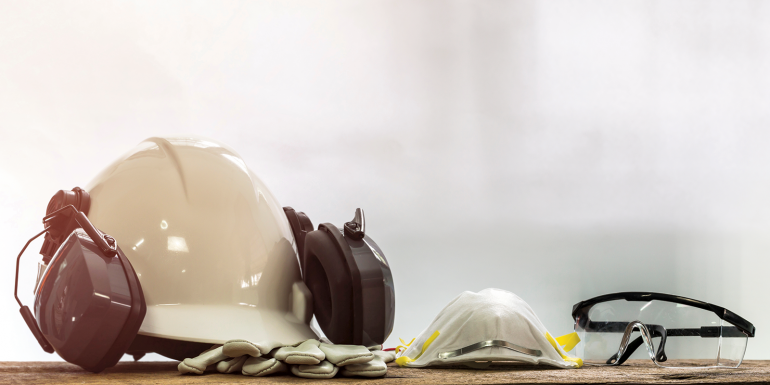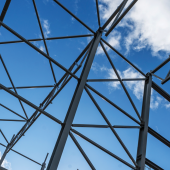Sound advice

David Ford, Compliance Lead at contractor accreditation scheme CHAS, highlights seven areas to focus on to prevent work-related hearing loss.
Exposure to elevated levels of noise at work can lead to irreversible hearing damage. It can be disabling for those affected, interfering with communications and concentration, causing stress and anxiety which, in turn, can contribute to other health issues, such as high blood pressure. While the Health and Safety Executive (HSE) says data on work-related, noise-induced hearing loss is limited, it remains one of the most common occupational health complaints, accounting for 75% of all health-related civil claims in industry. Thankfully, there are many ways to reduce noise and noise exposure in the workplace and, most often, a combination of methods works best.
1 Noise assessment
How do you recognise a noise problem in the workplace? This is an interesting dilemma. The HSE has provided a helpful guide for employers to identify if noise in their workplace could cause potential health issues (hse.gov.uk/noise). According to the Control of Noise at Work Regulations 2005, the levels at which employers must assess the risk to workers’ health and provide them with information and training is 80 decibels (dB). This is considered the lower action level for noise exposure. The upper action level is set at 85dB, meaning practical measures must be attempted to reduce noise levels via engineering controls or other technical methods and hearing protection becomes mandatory if the noise cannot be controlled by these means. 87dB is the exposure limit – no worker should be exposed to noise levels that exceed this, factoring in hearing protection. Active noise monitoring can provide an early indication of a problem and is preferable to just waiting for the trigger levels to be reached.
Noise assessments should be undertaken by somebody who understands the regulations and is competent in identifying where the risks are and who they are likely to affect. Findings should be compared against the regulatory exposure action levels, recorded and used to inform an action plan that outlines what measures can be taken to comply with the law. Risk assessments should be reviewed regularly and the HSE recommends they are looked at whenever workplaces changes are made and preferably no less than every two years.
2 Eliminating the noise at source
Eliminating noise at source should always be the first measure, with the simplest example being to remove the offending work process or machinery. Outsourcing noisy operations could be a possibility for some businesses, while specific procurement decisions and workplace design can all lead to noise elimination.
Noise risk management becomes far simpler if the number of employees who are exposed to dangerous noise levels is limited. Planning where noisy operations take place and segregating them from other work activities is an obvious solution. Walls, screens, barriers and distance can reduce noise exposure considerably, and duration of exposure can be reduced by rotating shift patterns or by the provision of a noise refuge.
3 Machinery
Whenever new equipment or work processes are introduced, the impact of noise should be a consideration. Implementing a noise-reducing purchasing policy avoids the need to retrofit noise control solutions. The Supply of Machinery (Safety) Regulations 2008 stipulate that suppliers are obliged to make their products generate as little noise as possible. Therefore, before acquiring new machinery, it is prudent to liaise with the manufacturer to review installation instructions and maintenance arrangements, and establish the likely noise levels for the specific conditions under which the machinery will be operated. Where it is necessary to buy noisy machines, keep a record of the reasons why that decision was taken, as it will help influence what improvements need to be made in the future. The HSE Buy Quiet guide to purchasing quieter equipment provides further advice.
If it becomes necessary to retrofit existing equipment, damping pads, sound barrier matting and other absorbent acoustic materials are in widespread use, especially to line resonant areas and reduce noise-generating gaps and impact. They will often generate up to 25dB in noise reduction, while causing little to no change in the effective operation of machinery. Silencers can be applied to exhausts, for example, and can invariably reduce noise by 20dB-30dB, while just a 20% cut in fan speed will knock 5dB off the noise it emits. For more ideas, the Engineering Industry Noise Task Group has produced a guide to its Top 10 Noise Control Techniques.
4 Personal protective equipment (PPE)
Hearing protection is useful but, as with all PPE, it should be the last line of defence because it reduces employees’ ability to communicate effectively, be alert to impending hazards or hear warning signals. In some workplaces, hearing protection with active listening features is now being mandated. This protects workers from damaging noise but still allows them to hear at a safe level so they can communicate and hear essential warning signals.
The law says that employers are required to provide hearing protection for employees if they ask for it and if noise exposure exceeds the upper noise action levels. With that comes the responsibility to ensure that all PPE is well maintained, that staff are trained on how and when to use it and that the right protection has been selected for the situation. A targeted approach means hearing protection is only worn when necessary. The alternative can lead to isolation among workers or a reluctance to use protection altogether. Be sure to factor in how well hearing protection works alongside other PPE.
5 Workplace signage
In loud environments, noise hazard signs are important to help workers identify where the hearing protection zones are and where wearing noise protection is compulsory. Innovative, noise-activated warning signs go a step further – these are linked to the noise itself, being triggered to illuminate once noise reaches a pre-set level – of 80dB, for example. This can be especially useful in workplaces with multiple zones and varying levels of noise, and can help manage the use or overuse of PPE. Some interactive warning signs can even log and track noise levels, which can feed into risk assessments and identify specific problem areas that require action. Signs directing employees to noise exclusion areas and refuges are just as important in the overall management of limiting the impact of noise exposure.
6 Health surveillance
Damage to hearing is hard to recognise because it builds up gradually, but early intervention is key to ensuring the best outcome. It is important to alert employees to the early warning signs of hearing damage, such as ringing or buzzing in their ears, difficulty in understanding or keeping up with conversation, feeling tired or stressed at having to concentrate on listening and being unable to distinguish or hear various sounds.
Hearing checks form part of an ongoing health surveillance programme and they must be provided if employees are going to be regularly exposed to the upper noise exposure action values or if they are already at risk. Ideally, hearing checks will be carried out annually for the first two years of employment and then at three-yearly intervals.
7 Training
Where employees are exposed to noise likely to be at or above the lower action value, the employer has a duty to provide them with the correct information, instruction and training. This will include explanation of the risks they could face, the prevention and control measures that have been taken, what the noise action values are, the provision of PPE and how to use it, the company health surveillance policy and how their hearing health will be monitored throughout their employment.
For further information on controlling the risks of noise at work, review the published HSE guidance leaflet INDG362 Noise at Work at bit.ly/INDG362
For more, visit chas.co.uk









